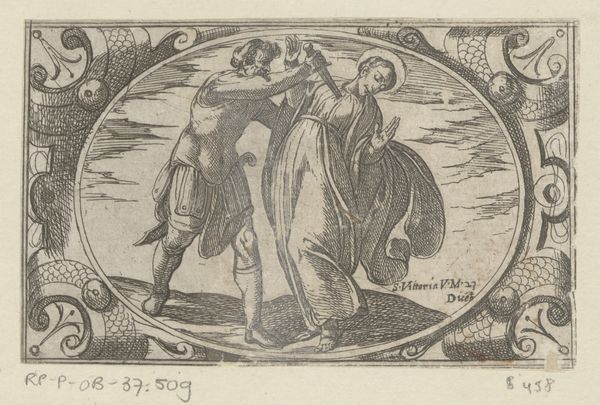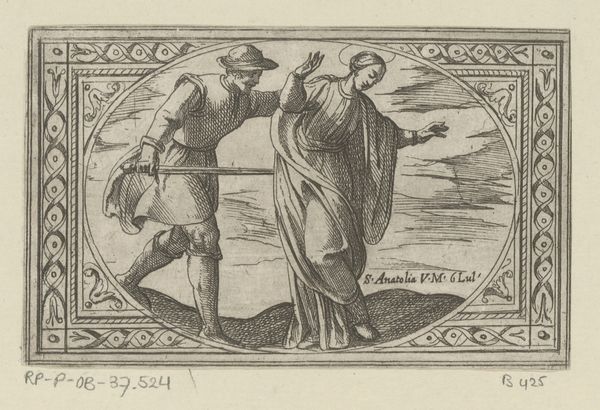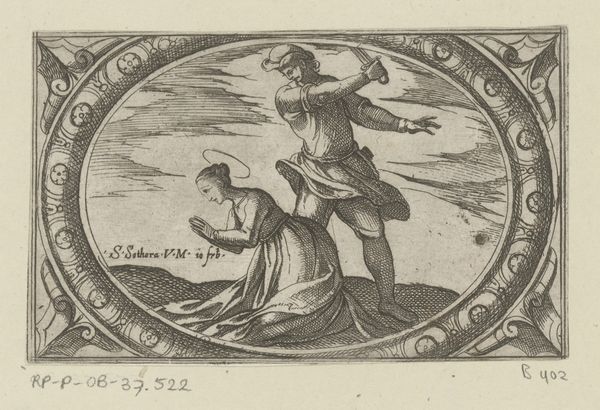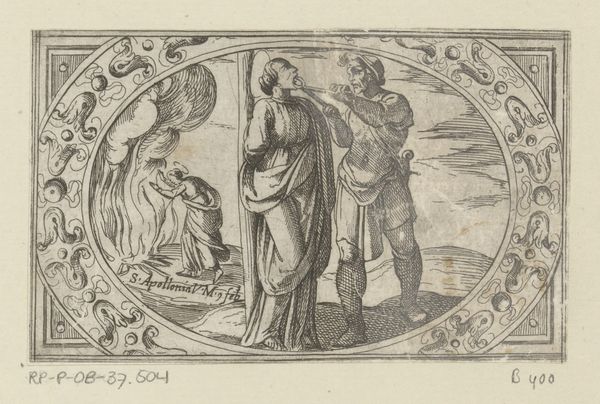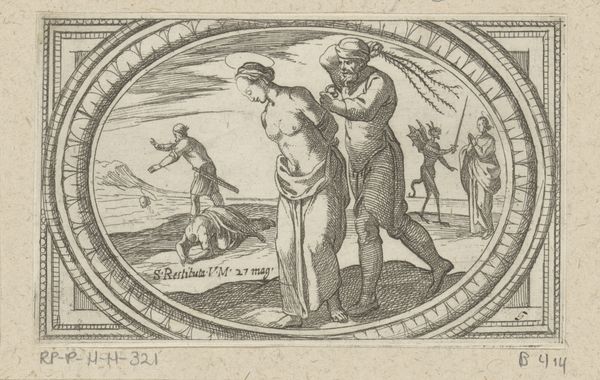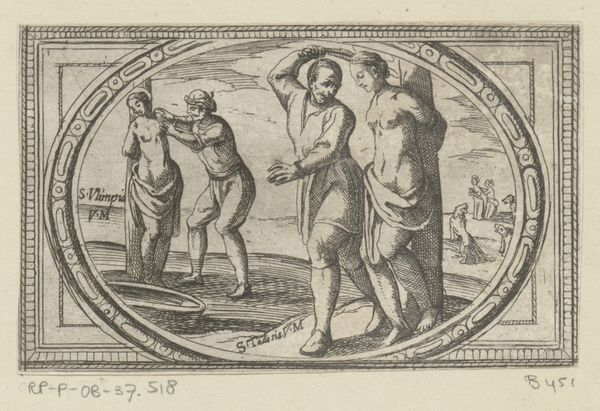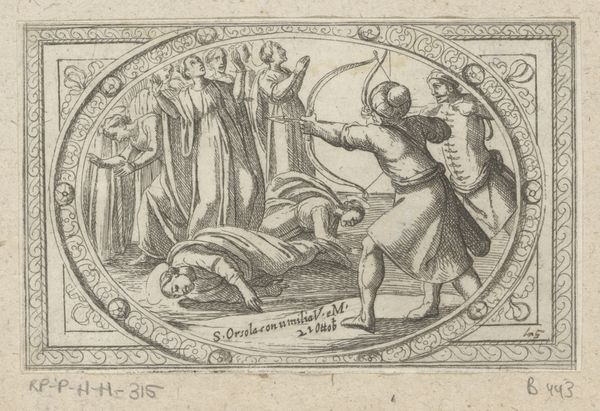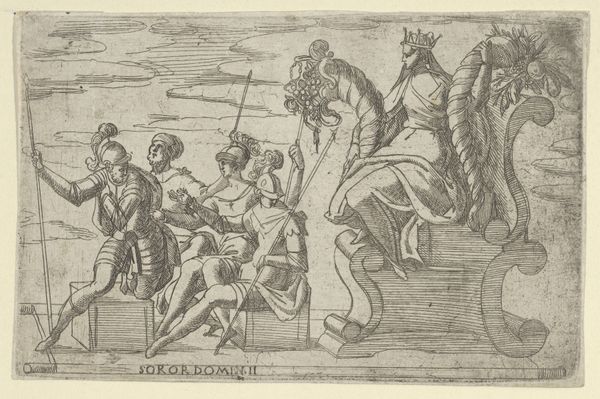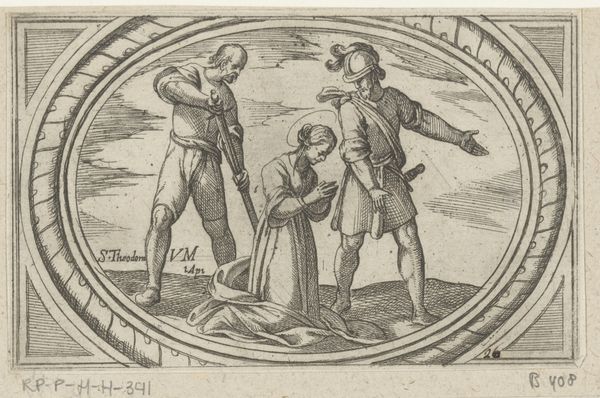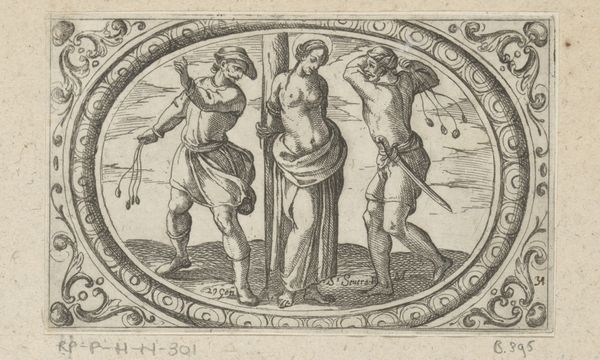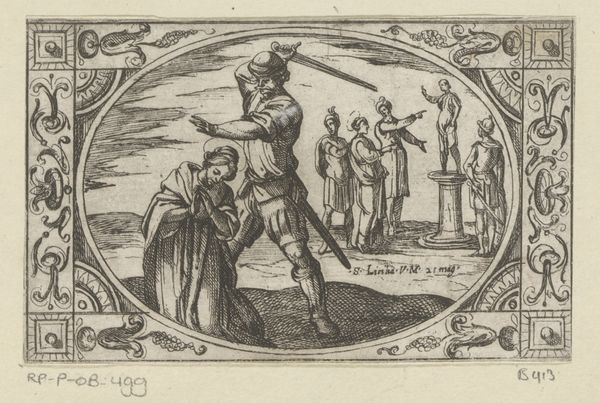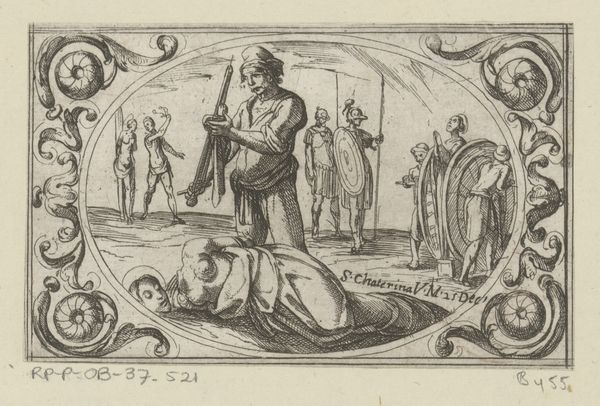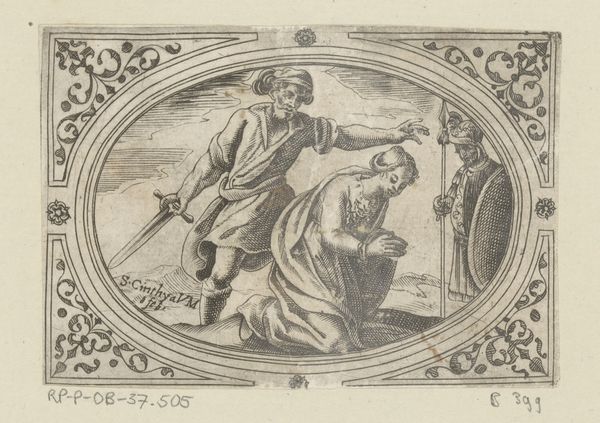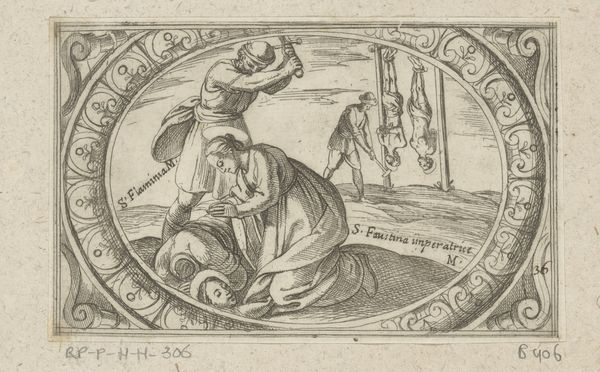
drawing, print, intaglio, pen, engraving
#
drawing
# print
#
pen illustration
#
pen sketch
#
intaglio
#
old engraving style
#
figuration
#
11_renaissance
#
pen-ink sketch
#
line
#
pen work
#
pen
#
history-painting
#
italian-renaissance
#
engraving
Dimensions: height 73 mm, width 114 mm
Copyright: Rijks Museum: Open Domain
Curator: This is "H. Paulina," an intaglio print attributed to Antonio Tempesta, likely created between 1565 and 1630. The work currently resides here at the Rijksmuseum. What's your initial impression? Editor: Well, right away, I’m struck by the stillness. There's this eerie calm juxtaposed with, you know, what I presume is a recent decapitation. It's almost…clinical, in a strange way. All that sharp pen work. It makes my skin crawl, almost. Curator: The engraving captures a popular scene from early Christian martyrdom, part of a broader artistic trend of depicting religious and historical events. Printmaking, particularly engraving, played a vital role in disseminating such narratives to a wide audience. Editor: Right. Like visual propaganda, but beautifully rendered. It is disturbing how elegantly death is packaged. I’m trying to decide what those dudes in the hats are feeling, though, you know? Are they satisfied, conflicted? It’s hard to tell. The pen strokes leave the details up to the viewer, almost. Curator: These prints were often part of larger series, circulated to reinforce certain beliefs or moral lessons. Tempesta and his contemporaries frequently used the readily available medium of printmaking to communicate socio-political themes. The question isn’t just what *they* feel, but how this image, duplicated and spread, influenced those who viewed it. Editor: True. And the border around it feels almost… decorative? The artist almost frames death for consumption. I can feel how someone from a different era or community could’ve missed the point entirely. Instead of death and meaning, they see beauty and might hang this artwork to show others its details. Curator: Exactly. Reception changes over time, influencing the function of such prints and images as well. Editor: Thanks, I didn’t expect to get quite so mired in mortality before my morning coffee, but there you have it. Curator: Well, it gives you something to ponder as you go about your day. For me, it reinforces how context is everything when experiencing art across history.
Comments
No comments
Be the first to comment and join the conversation on the ultimate creative platform.
